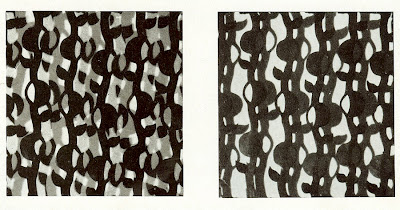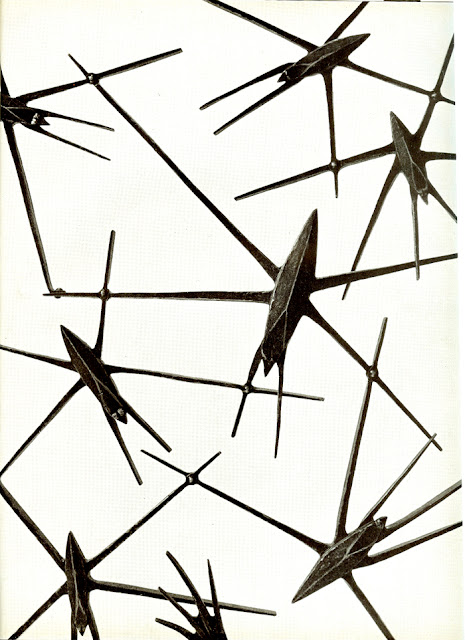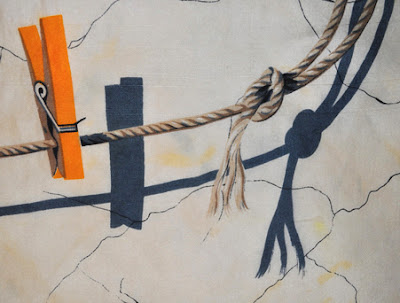Lately I've been thinking about how we explain the universe, not just the stars in the sky, but how we make sense of the open field of seemingly unrelated elements of our lives-- objects, ideas, the need to survive, sensations, events, the imagination, memories, personal relationships, dreams--pretty much everything which is the universe of who we are. What connections do we make? What do we see? What does that tell us about who we are?
Above are some maps I made by connecting random dots and seeing what emerged. Mountains and a moray eel appear twice; two figures in the middle of the second map are either dancing or arguing with one another, I wasn't sure which. There's a neighborhood, two things that fly-- a kite and a bird, a flower and a seed, time in the form of an hourglass, math and geometric shapes, a jewel stone, ideas and a question mark.
 |
Anselm Kiefer
Sternenfallen (Falling Stars), 1998
Mixed media |
What got me thinking about all this is a couple of works of art that convey this kind of interpretive complexity in different ways. In Anselm Kiefer's "Falling Stars" series the artist asks "Why do humans need to explain the universe?" "What does that tell us about who we are as humans?" He uses the night sky and the array of myths associated with constellations to show how humans from different cultures throughout time have not only explained what they saw, but connected it to their earthly lives, making the stars into maps of events, peopling the sky with characters and drama while investing it with supernatural power.
 |
Aboriginal painting
Untitled |
Aboriginal artists take an aerial view of life, looking down on the earth's surface, rather than up to the sky to explain their universe. They use a field of dots to document everything from crucial survival info such as directions, paths, and location of water, to spiritual concerns including the organization of ritual ceremonies, showing aerial views of seating plans and specifying attire for attendees. One work of art may contain creation stories, topographical features, genealogy, sounds, all recorded with lots of dots-- which, as I consider this painting, my maps, and the Kiefer, brings up a another question-- "What's up with with all the dots?".

















































